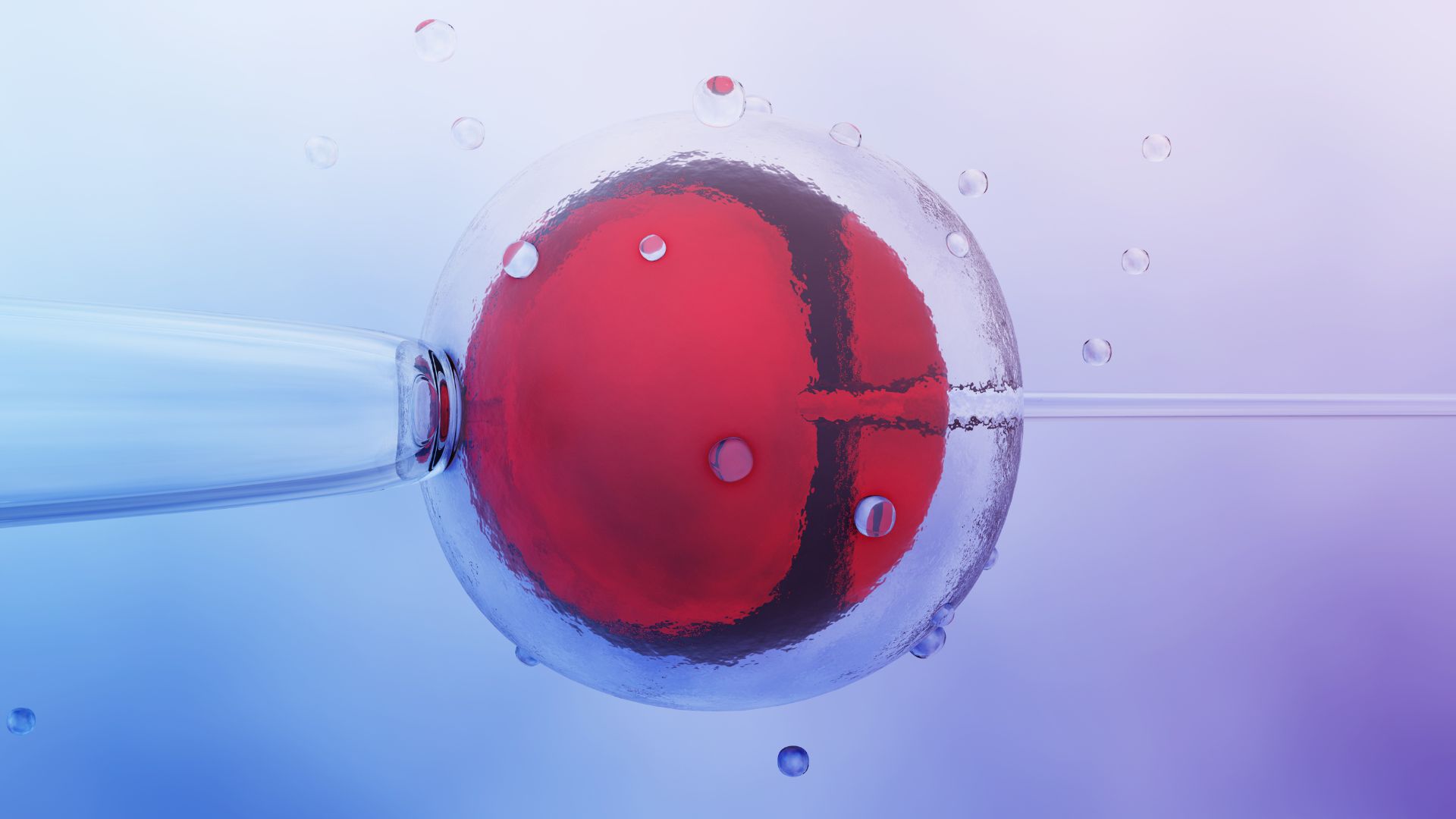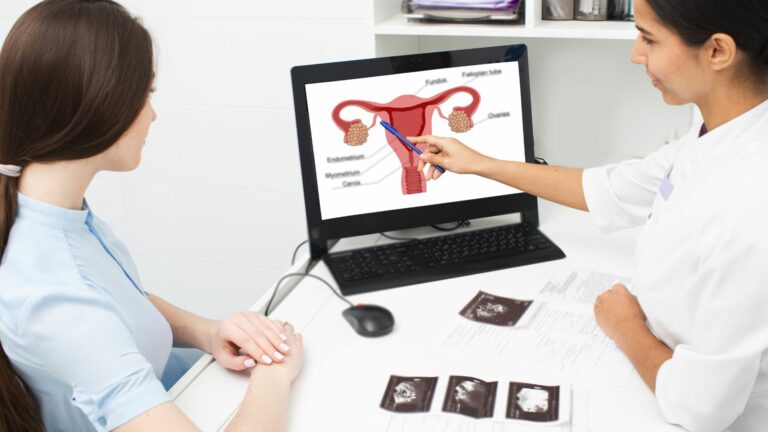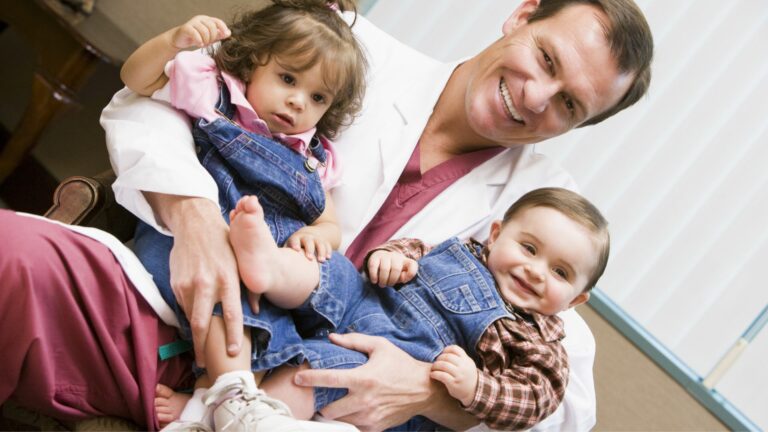
Introduction: Beyond IVF – A New Frontier
In vitro fertilization (IVF) has been a groundbreaking advancement in reproductive technology, offering hope to countless couples struggling with infertility.
It’s a procedure where eggs are fertilized by sperm outside the body, in a laboratory dish, and the resulting embryos are then implanted into the uterus.
However, IVF isn’t a solution for everyone. For individuals without a functioning uterus, or those facing medical conditions that make pregnancy impossible or risky, the dream of having a biological child can feel out of reach.
But what if we could take the next leap beyond IVF? Imagine a world where pregnancy could occur outside the human body, in an artificial womb.
This isn’t just a science fiction plot; it’s an area of active research with the potential to revolutionize reproductive medicine. An artificial womb, also known as an artificial uterus, is a theoretical device designed to replicate the environment of a mother’s womb, providing a safe and nurturing space for a fetus to develop.
In this article, we’ll delve into the fascinating world of artificial womb IVF. We’ll explore the current state of research, how this technology might work, the potential benefits and challenges it presents, and the ethical considerations that come with such a groundbreaking innovation. So, buckle up and join us as we journey into this new frontier of reproductive possibilities!
Inside the Artificial Womb: How Would It Work?
Let’s take a peek inside this futuristic concept! While a fully functioning artificial womb for humans is still a work in progress, scientists envision a few key components working together to mimic the nurturing environment of a natural womb.
Components and Function:
| Component | Function |
|---|---|
| Amniotic Tank | Temperature-controlled tank filled with fluid mimicking amniotic fluid |
| Artificial Placenta | Provides essential nutrients and oxygen, removes waste products |
| Umbilical Cord Connection | Connects fetus to artificial placenta for nutrient exchange |
| Monitoring and Regulation | Sensors and monitors to regulate the environment |
Current Research & Advancements:
- Scientists have successfully gestated lamb fetuses in artificial wombs for up to four weeks
- Researchers are using advanced simulation technology to model and study the birth process of premature infants
- The Children’s Hospital of Philadelphia is developing an extra-uterine system for premature lambs
From Conception to “Birth”: The Potential IVF Process:
- Embryo created in lab (traditional IVF)
- Embryo transferred to artificial womb
- Fetus nourished and monitored as it grows
- “Delivery” from artificial womb when fully developed
This “birth” process is still theoretical, but researchers envision a gentle transition from the artificial environment to the outside world.
Benefits and Ethical Considerations
A Beacon of Hope? Potential Benefits and Applications
The potential benefits of artificial wombs could be truly game-changing. While we’re still in the early stages of research, let’s explore some of the ways this technology could revolutionize reproductive medicine and transform lives.
Overcoming Infertility
Imagine a world where infertility is no longer a barrier to having biological children.
Key Benefits:
- Uterine Factor Infertility: Hope for women born without a uterus or those who have had their uterus removed
- Same-Sex Male Couples: Possibility of having a child biologically related to both partners
- Increased Reproductive Autonomy: More control over reproductive choices and timing
Reducing Pregnancy Risks
Pregnancy comes with inherent risks for both mother and baby. Artificial wombs could potentially mitigate these risks.
| Risk | How Artificial Wombs Could Help |
|---|---|
| Preeclampsia | Provide a safer environment |
| Gestational diabetes | Shield mother from metabolic stress |
| Preterm labor | Allow full-term development outside the body |
Difficult Pregnancies: Artificial wombs could provide a viable alternative for women with chronic illnesses, disabilities, or other conditions that make pregnancy risky.
A Lifeline for Premature Infants
Premature birth is a leading cause of infant mortality and can lead to lifelong health complications.
Potential Improvements:
- Improved Survival Rates: Better chance of survival for extremely premature babies
- Long-Term Health Outcomes: Potential to reduce or eliminate long-term health problems associated with premature birth
Navigating Uncharted Territory: The Ethical Maze
Artificial wombs raise a host of complex ethical questions that we need to grapple with. Let’s explore some of these challenges.
Redefining Parenthood
Artificial wombs could challenge our traditional understanding of parenthood.
Key Ethical Questions:
- What does it mean to be a mother if pregnancy occurs outside the body?
- How will legal frameworks define parenthood in the context of artificial wombs?
- How will society recognize multiple parental roles in cases of artificial womb gestation?
The “Extrauterine Child”: Rights and Moral Status
A recent Alabama Supreme Court case granted frozen embryos the legal status of “children.”
This ruling raises questions about the rights and moral status of fetuses grown in artificial wombs.
Ethical Considerations:
- Right to Life Debates: When does life begin in an artificial womb?
- Moral Status: What rights and protections should be afforded to fetuses in artificial wombs?
Access & Equity
As with any new technology, there are concerns about access and equity.
Potential Issues:
- Cost and Availability: Could artificial wombs create new disparities in reproductive opportunities?
- Exacerbating Inequalities: Might this technology disproportionately benefit certain groups?
Embryo Adoption Debate
There are millions of frozen embryos currently in storage, raising ethical questions about their fate.
Considerations:
- Surplus Embryos: Could artificial wombs offer a new option for these embryos?
- Increased Demand for IVF: Might artificial wombs lead to an increase in the number of embryos created?
Related Topics in Reproductive Technology
As we explore the frontier of artificial womb IVF, it’s important to consider how this technology relates to other advancements and considerations in the field of reproductive medicine. Here are some key areas that intersect with the concept of artificial wombs:
- IVF Advancements: Artificial womb technology represents one of the most cutting-edge developments in IVF. Understanding current advancements can provide context for how artificial wombs might fit into the broader landscape of reproductive technology.
- Ethics in IVF: The ethical considerations surrounding artificial wombs are complex and multifaceted. This topic delves deeper into the ethical debates in IVF, many of which are relevant to the discussion of artificial womb technology.
- The Future of IVF in India: While artificial womb technology is still theoretical, it’s part of the broader future of IVF. This resource explores how innovations like artificial wombs might shape reproductive medicine in India and beyond.
- IVF Research Updates: Staying informed about the latest research in IVF is crucial for understanding the progress towards technologies like artificial wombs. This link provides up-to-date information on various IVF research areas.
- IVF Success Rates in India: As we consider the potential of artificial wombs, it’s important to understand current IVF success rates. This provides a baseline for comparing potential future technologies.
- Fertility Preservation for Cancer Patients: Artificial wombs could potentially play a role in fertility preservation. This resource explores current methods of fertility preservation, which could be complemented by artificial womb technology in the future.
- Preimplantation Genetic Testing (PGT): PGT is an advanced technique in IVF that could be used in conjunction with artificial womb technology to further improve outcomes and reduce genetic disorders.
These related topics provide a broader context for understanding the potential impact and implications of artificial womb IVF within the field of reproductive medicine.
Looking Ahead: The Future of Artificial Womb IVF
While research on artificial wombs is progressing rapidly, it’s important to maintain realistic expectations about their development and implementation.
Timeline and Challenges
We’re not quite at the point of babies growing in pods like in sci-fi movies.
Key Points:
- Realistic Expectations: Widespread use for human pregnancies is likely still decades away
- Technological Hurdles:
- Replicating the complex environment of a natural womb
- Ensuring long-term safety and health of babies born from artificial wombs
- Ethical Consensus: Need for clear guidelines and regulations for responsible use
The Need for Societal Dialogue
| Aspect | Importance |
|---|---|
| Open and Inclusive Discussion | Involve diverse perspectives in shaping the future of this technology |
| Diverse Perspectives | Consider impacts on different communities and individuals |
Everyone should have a voice in shaping the future of this technology.
A New Era of Reproductive Choice?
Artificial wombs have the potential to revolutionize reproductive medicine and transform our understanding of parenthood and family.
Potential Impacts:
- Offer hope to individuals struggling with infertility
- Reduce risks of pregnancy and childbirth
- Improve outcomes for premature babies
- Redefine what it means to be a parent
- Create new possibilities for family structures
- Raise fundamental questions about the beginning of life and rights of the unborn
As we look to the future, it’s important to weigh the potential benefits and risks of artificial womb technology.
As we stand on the brink of this new frontier in reproductive technology, it’s clear that artificial wombs hold immense promise but also raise profound questions. The potential to overcome infertility, reduce pregnancy risks, and improve outcomes for premature babies is tantalizing. Yet, the ethical dilemmas surrounding parenthood, rights, and access cannot be ignored.
The journey towards artificial wombs is a journey into uncharted territory, filled with both excitement and uncertainty. It’s a journey that requires:
- Careful navigation
- Thoughtful dialogue
- Commitment to responsible innovation
Whether artificial wombs ultimately become a reality or remain a concept confined to the realm of science fiction, the discussions they spark will undoubtedly shape the future of reproductive medicine and our understanding of what it means to be human.
The path ahead is uncertain, but one thing is clear:
Artificial wombs have the potential to reshape our world in profound ways.
As we embark on this journey, let’s embrace the possibilities with open minds and thoughtful hearts, ensuring that this technology, if realized, serves the greater good and upholds the dignity and rights of all individuals.






